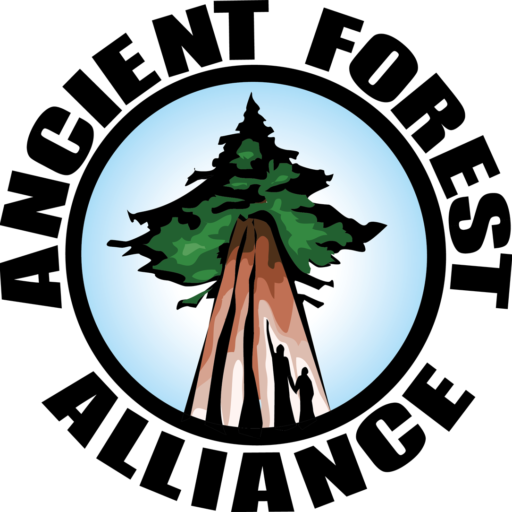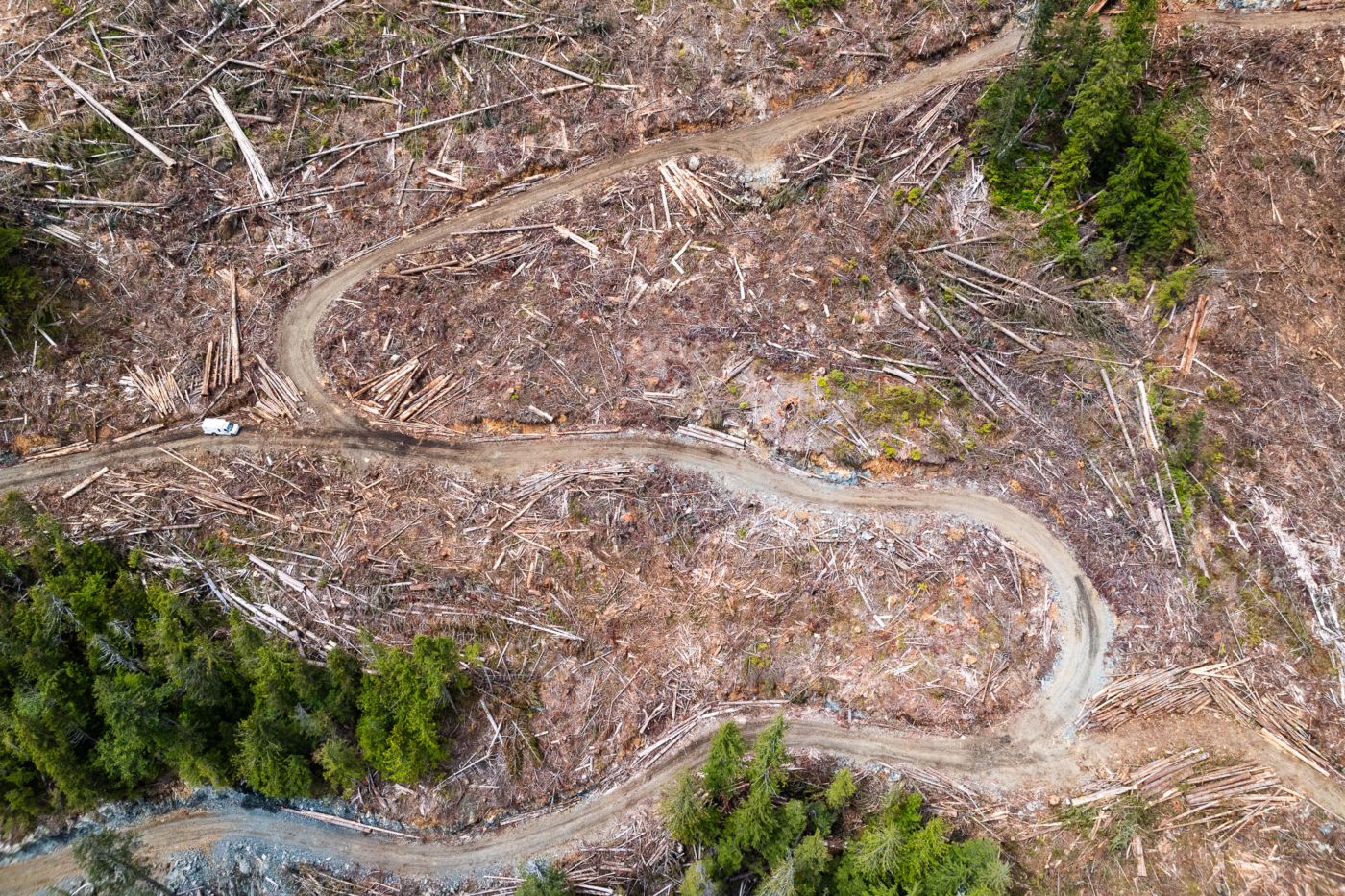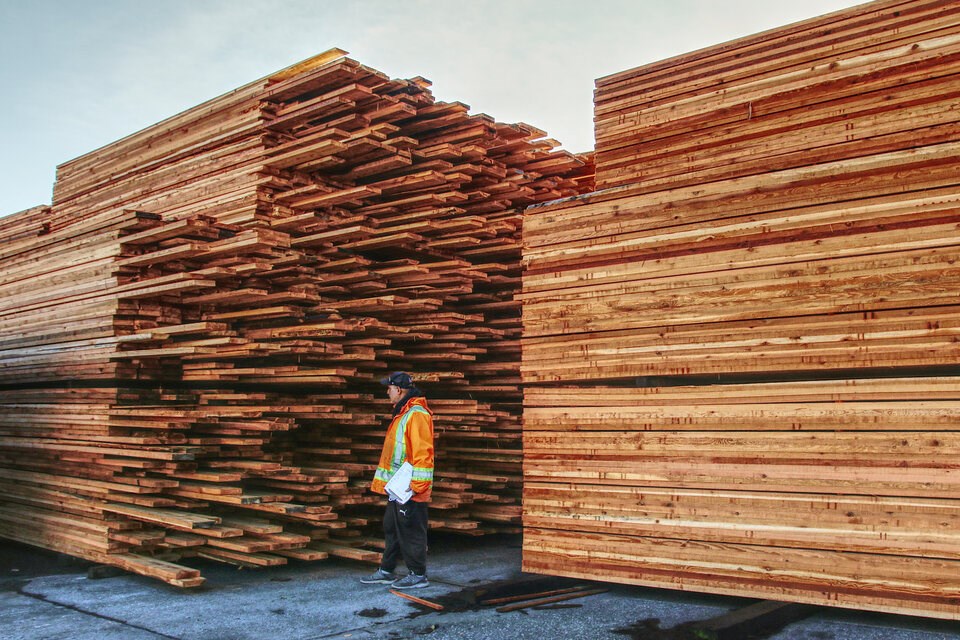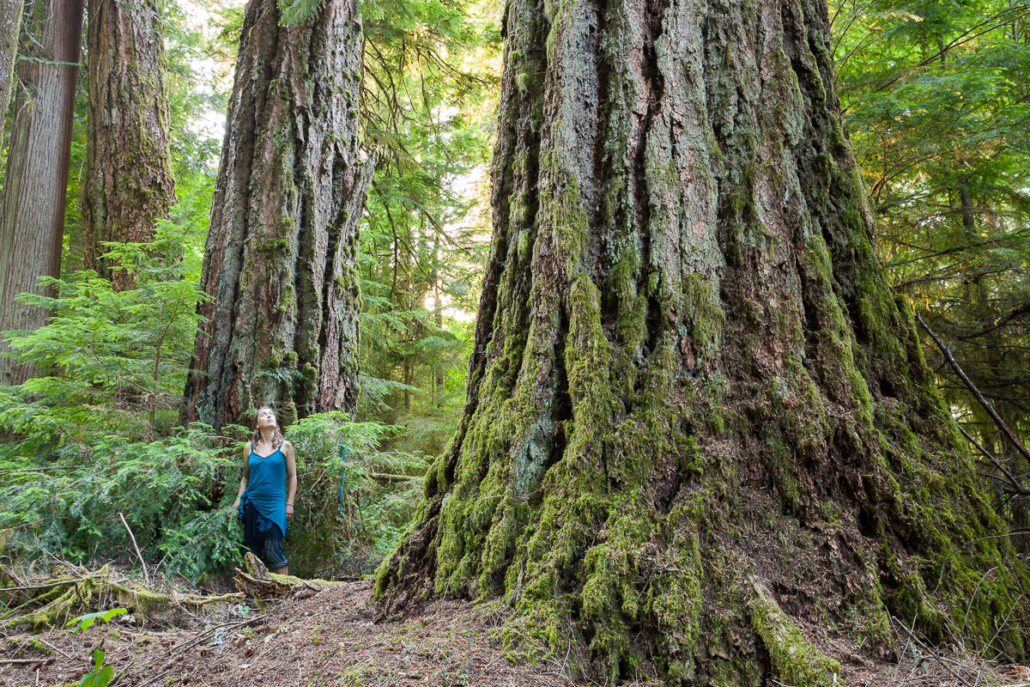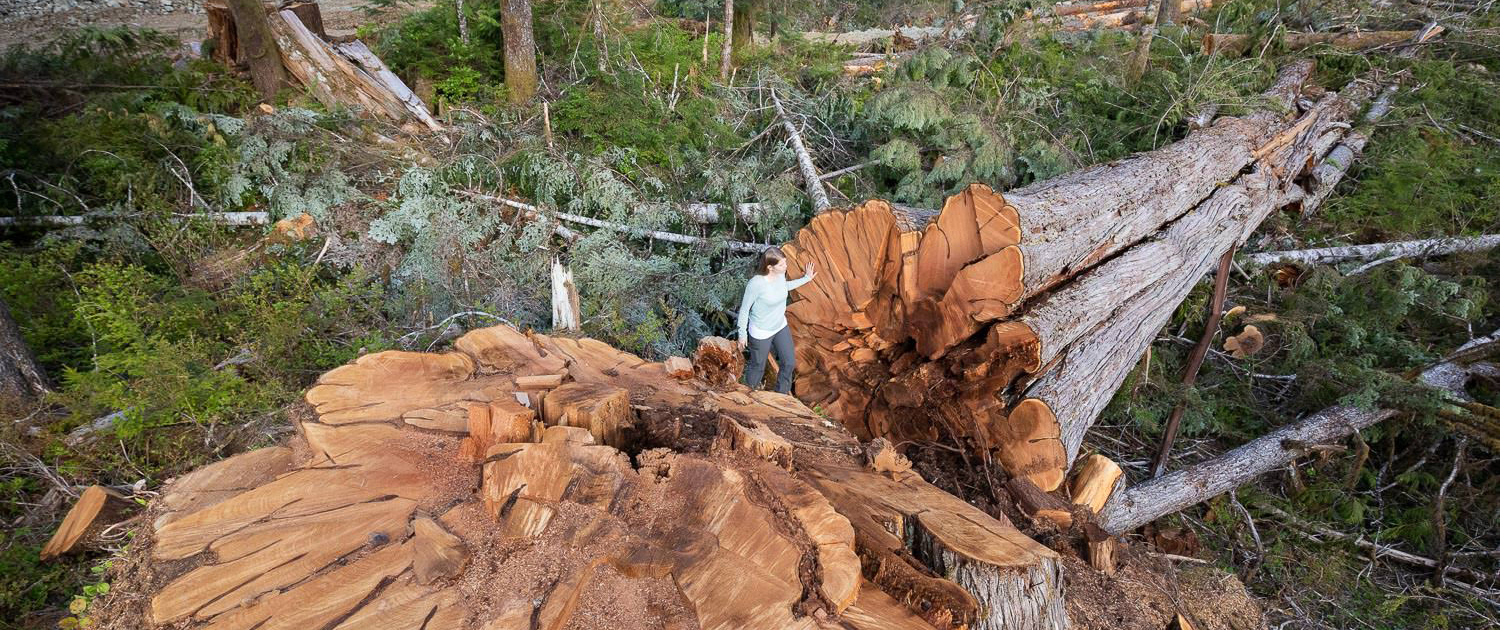 Jun 4 2020
Jun 4 2020B.C. old-growth data ‘misleading’ public on remaining ancient forest: independent report
Government touts 13 million hectares of province’s forests are old growth, but ecologists found only 35,000 hectares support the largest trees
The Narwhal
June 4th, 2020
The majority of British Columbia’s productive old-growth forests are gone, and the majority of the old growth remaining is slated to be logged, says an independent study released Thursday by B.C. ecologists who previously worked for the provincial government.
The findings of the report shed new light on provincial claims that, despite intensive logging, B.C. is still home to significant amounts of old growth.
According to the B.C. government, 23 per cent of forest in the province is old growth, about 13 million hectares.
Yet the new study found only three per cent of B.C. is capable of supporting large trees and within that small portion of the province, the ecologists found only 2.7 per cent of the trees are actually old as “old forests on these sites have dwindled considerably due to intense harvest.”
“We’re talking a tiny fraction of a fraction. We’ve basically logged it all,” said Rachel Holt, one of the authors of the study, entitled B.C.’s Old Growth Forest: A Last Stand for Biodiversity.
The research found most of the area the province considers old growth can’t support big trees, which store high amounts of carbon, support biodiversity and make forests resilient to wildfires. Instead, most of it is low-productivity forest, such as small trees at high elevations.
The study concludes there are only about 35,000 hectares of forest with the largest, most productive old-growth trees remaining in B.C., meaning areas where trees are expected to grow over 25 metres tall in 50 years.
A total of 415,000 hectares of forest contain trees that are expected to grow over 20 metres tall in 50 years.
Provincial framing of old-growth data ‘very misleading’
The province regularly publishes total old-growth data. But when the researchers analyzed that data according to ecosystem type, they found it painted a very different picture than what they were seeing in government disclosures.
“There’s very, very little of the stuff that you and I and everybody think of when they think of old growth,” said Holt. She called the government’s framing of the data “very misleading.”
Karen Price, lead author of the study, said, because government policy doesn’t differentiate between productive and non-productive old-growth forests, companies can harvest big trees and leave small, unproductive trees and still meet their old-growth retention targets.
The researchers — Price, Holt and Dave Daust — are calling on the province to implement an immediate moratorium on harvesting old and mature forest in ecosystems with less than 10 per cent of old forest remaining, even if they fall within existing cutblock permits. They are also asking the government to increase old-growth retention targets and improve old-growth management areas to “include larger areas rather than fragmented patches.”
In an emailed response, a spokesperson from the Ministry of Forests, Lands, Natural Resource Operations and Rural Development said it could not comment on the researchers’ findings until it reviews a report from the old-growth strategic review panel, which was submitted in May.
In January two members of the government-appointed old-growth review panel told The Narwhal they found a surprising level of consensus among British Columbians when it comes to the importance of protecting the province’s intact ancient forests.
Scientists break silence, push for more transparent data
Holt, Price and Daust have all worked with the province before. Price said she was tired of doing reports on climate change for the government and never seeing the recommendations made public. She wants to increase awareness around old growth.
“I’m tired of speaking carefully,” she said.
The researchers presented their report to the old-growth strategic review panel in March. The province appointed the independent panel to engage with the public on old growth and report back with recommendations to the Ministry of Forests, Lands, Natural Resource Operations and Rural Development.
The panel began public engagement in 2019 and submitted its report in early May. But, to the dismay of Holt and Price, the province may not make the report public for six months.
“The government needs to review the [old-growth strategic review panel’s report] thoroughly before commenting on it or speculating on how the report’s findings may affect British Columbia’s old growth strategy,” a ministry spokesperson said via email.
Price said she wants to see more government transparency, which is part of the reason they are publishing their findings now.
“This is the time to be brave,” she said. “If we want to have resilient human populations, we need to have resilient ecosystems. And right now, our policy is trashing resilience.”
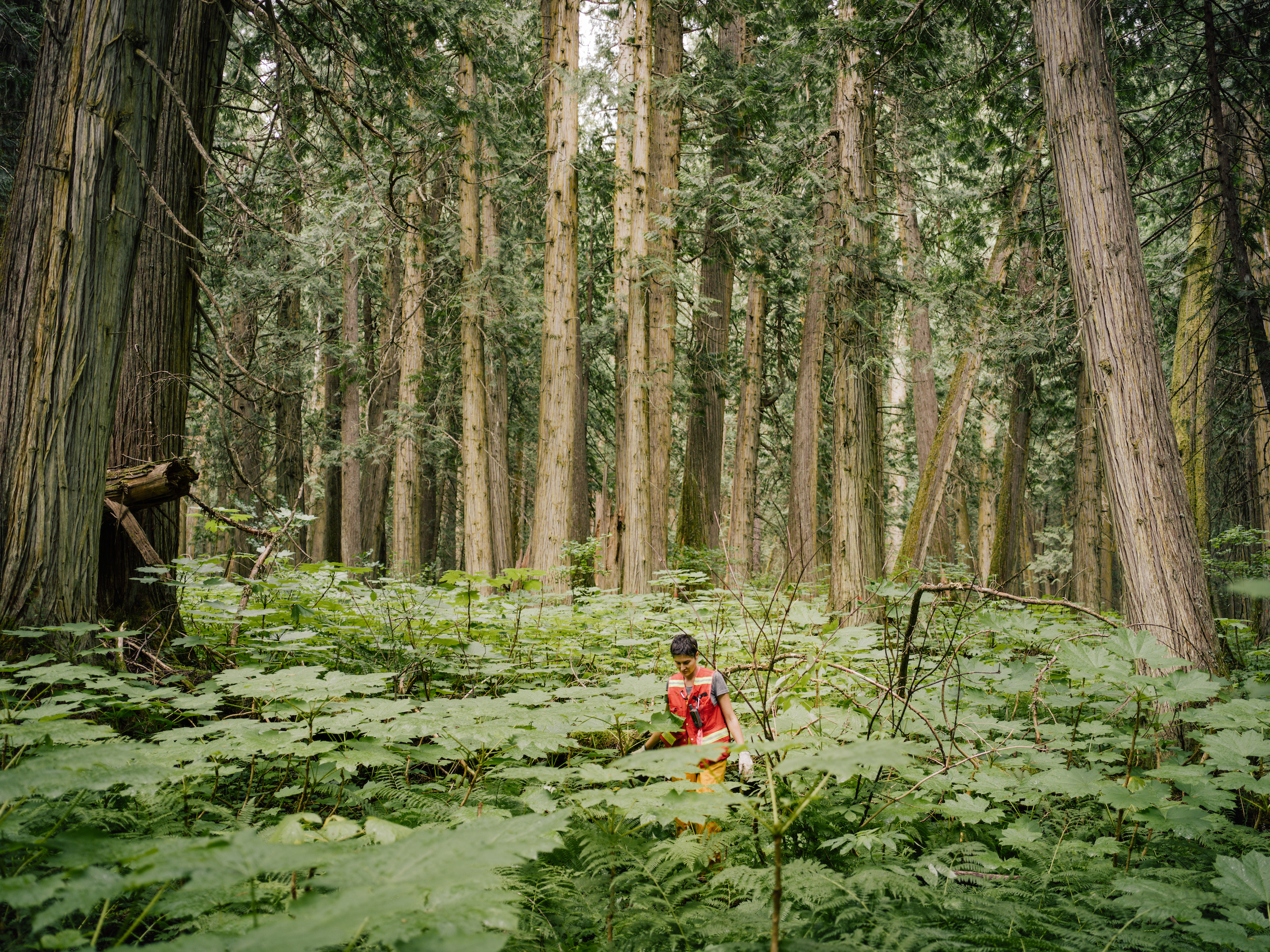
Old forests are ‘irreplaceable’
Holt said old-growth forests are integral to adapting to climate change and maintaining biodiversity.
Large old-growth trees sequester and store carbon, acting as carbon sinks. But carbon is released when old-growth trees are cut down and left to rot or burned in slash piles.
Old-growth forests are more resilient to wildfires and absorb water from annual snow-melt. Consequently, clearcuts can lead to floods.
But old-growth forests are also valuable timber. BC Timber Sales generated $221 million net revenue in the 2018-19 fiscal year despite financial losses due to intense wildfires in 2018. According to Sierra Club BC, old growth is cut down across the province at the rate of more than 500 soccer fields per day.
Jim Pojar, a seasoned ecologist who used to work for the province, said new forests are unlikely to grow back in the same way due to the impacts of climate change.
He said it takes at least 250 years for “true old growth” to develop, but the climate will have changed so drastically in 200 years that forests will “inevitably” be made up of different plant species and soils.
“The answer is not simple, but pretending that the problem doesn’t exist is not the answer.”
“It will not return to the primary condition, even given several centuries,” Pojar told The Narwhal.
“I consider these really big, productive old-growth forests to be an irreplaceable, essentially non-renewable resource.”
Pojar said experts have known for a long time that the province’s data doesn’t reflect the extent of logging productive trees, but this recent report shows in new detail just how little old-growth forest is left.
“It alarms me, but it doesn’t surprise me,” he said.
Pojar said overlogging is largely rooted in industry deregulation under Gordon Campbell’s Liberal government, which was in power from 2001 to 2011, and other threats to forests include the mountain pine beetle and increasing wildfires. He said the current NDP government has not taken substantive measures to transition the industry to more sustainable practices. Instead, he said, the administration has left things unchanged because it is “desperate for ways to keep people working.”
Holt agrees the government is torn between the “short-term” need for jobs and “long-term” environmental sustainability but said chasing a limited amount of old growth doesn’t support either goal.
“The answer is not simple, but pretending that the problem doesn’t exist is not the answer,” said Holt. “We do not have a sustainable industry from a jobs or an environment perspective.”
Update June 4, 2020 at 5:35 p.m. PST: A previous version of this story described a study as saying that only 35,000 hectares of forest with large old-growth trees are remaining in B.C. In fact, the study concluded that there are 415,000 hectares of forest that are home to large trees, but only 35,000 hectares with the largest, most productive old-growth trees.
Read the original article
Government touts 13 million hectares of province’s forests are old growth, but ecologists found only 35,000 hectares support the largest trees
The Narwhal
June 4th, 2020
The majority of British Columbia’s productive old-growth forests are gone, and the majority of the old growth remaining is slated to be logged, says an independent study released Thursday by B.C. ecologists who previously worked for the provincial government.
The findings of the report shed new light on provincial claims that, despite intensive logging, B.C. is still home to significant amounts of old growth.
According to the B.C. government, 23 per cent of forest in the province is old growth, about 13 million hectares.
Yet the new study found only three per cent of B.C. is capable of supporting large trees and within that small portion of the province, the ecologists found only 2.7 per cent of the trees are actually old as “old forests on these sites have dwindled considerably due to intense harvest.”
“We’re talking a tiny fraction of a fraction. We’ve basically logged it all,” said Rachel Holt, one of the authors of the study, entitled B.C.’s Old Growth Forest: A Last Stand for Biodiversity.
The research found most of the area the province considers old growth can’t support big trees, which store high amounts of carbon, support biodiversity and make forests resilient to wildfires. Instead, most of it is low-productivity forest, such as small trees at high elevations.
The study concludes there are only about 35,000 hectares of forest with the largest, most productive old-growth trees remaining in B.C., meaning areas where trees are expected to grow over 25 metres tall in 50 years.
A total of 415,000 hectares of forest contain trees that are expected to grow over 20 metres tall in 50 years.
Provincial framing of old-growth data ‘very misleading’
The province regularly publishes total old-growth data. But when the researchers analyzed that data according to ecosystem type, they found it painted a very different picture than what they were seeing in government disclosures.
“There’s very, very little of the stuff that you and I and everybody think of when they think of old growth,” said Holt. She called the government’s framing of the data “very misleading.”
Karen Price, lead author of the study, said, because government policy doesn’t differentiate between productive and non-productive old-growth forests, companies can harvest big trees and leave small, unproductive trees and still meet their old-growth retention targets.
The researchers — Price, Holt and Dave Daust — are calling on the province to implement an immediate moratorium on harvesting old and mature forest in ecosystems with less than 10 per cent of old forest remaining, even if they fall within existing cutblock permits. They are also asking the government to increase old-growth retention targets and improve old-growth management areas to “include larger areas rather than fragmented patches.”
In an emailed response, a spokesperson from the Ministry of Forests, Lands, Natural Resource Operations and Rural Development said it could not comment on the researchers’ findings until it reviews a report from the old-growth strategic review panel, which was submitted in May.
In January two members of the government-appointed old-growth review panel told The Narwhal they found a surprising level of consensus among British Columbians when it comes to the importance of protecting the province’s intact ancient forests.
Scientists break silence, push for more transparent data
Holt, Price and Daust have all worked with the province before. Price said she was tired of doing reports on climate change for the government and never seeing the recommendations made public. She wants to increase awareness around old growth.
“I’m tired of speaking carefully,” she said.
The researchers presented their report to the old-growth strategic review panel in March. The province appointed the independent panel to engage with the public on old growth and report back with recommendations to the Ministry of Forests, Lands, Natural Resource Operations and Rural Development.
The panel began public engagement in 2019 and submitted its report in early May. But, to the dismay of Holt and Price, the province may not make the report public for six months.
“The government needs to review the [old-growth strategic review panel’s report] thoroughly before commenting on it or speculating on how the report’s findings may affect British Columbia’s old growth strategy,” a ministry spokesperson said via email.
Price said she wants to see more government transparency, which is part of the reason they are publishing their findings now.
“This is the time to be brave,” she said. “If we want to have resilient human populations, we need to have resilient ecosystems. And right now, our policy is trashing resilience.”

Old forests are ‘irreplaceable’
Holt said old-growth forests are integral to adapting to climate change and maintaining biodiversity.
Large old-growth trees sequester and store carbon, acting as carbon sinks. But carbon is released when old-growth trees are cut down and left to rot or burned in slash piles.
Old-growth forests are more resilient to wildfires and absorb water from annual snow-melt. Consequently, clearcuts can lead to floods.
But old-growth forests are also valuable timber. BC Timber Sales generated $221 million net revenue in the 2018-19 fiscal year despite financial losses due to intense wildfires in 2018. According to Sierra Club BC, old growth is cut down across the province at the rate of more than 500 soccer fields per day.
Jim Pojar, a seasoned ecologist who used to work for the province, said new forests are unlikely to grow back in the same way due to the impacts of climate change.
He said it takes at least 250 years for “true old growth” to develop, but the climate will have changed so drastically in 200 years that forests will “inevitably” be made up of different plant species and soils.
“The answer is not simple, but pretending that the problem doesn’t exist is not the answer.”
“It will not return to the primary condition, even given several centuries,” Pojar told The Narwhal.
“I consider these really big, productive old-growth forests to be an irreplaceable, essentially non-renewable resource.”
Pojar said experts have known for a long time that the province’s data doesn’t reflect the extent of logging productive trees, but this recent report shows in new detail just how little old-growth forest is left.
“It alarms me, but it doesn’t surprise me,” he said.
Pojar said overlogging is largely rooted in industry deregulation under Gordon Campbell’s Liberal government, which was in power from 2001 to 2011, and other threats to forests include the mountain pine beetle and increasing wildfires. He said the current NDP government has not taken substantive measures to transition the industry to more sustainable practices. Instead, he said, the administration has left things unchanged because it is “desperate for ways to keep people working.”
Holt agrees the government is torn between the “short-term” need for jobs and “long-term” environmental sustainability but said chasing a limited amount of old growth doesn’t support either goal.
“The answer is not simple, but pretending that the problem doesn’t exist is not the answer,” said Holt. “We do not have a sustainable industry from a jobs or an environment perspective.”
Update June 4, 2020 at 5:35 p.m. PST: A previous version of this story described a study as saying that only 35,000 hectares of forest with large old-growth trees are remaining in B.C. In fact, the study concluded that there are 415,000 hectares of forest that are home to large trees, but only 35,000 hectares with the largest, most productive old-growth trees.
Read the original article
